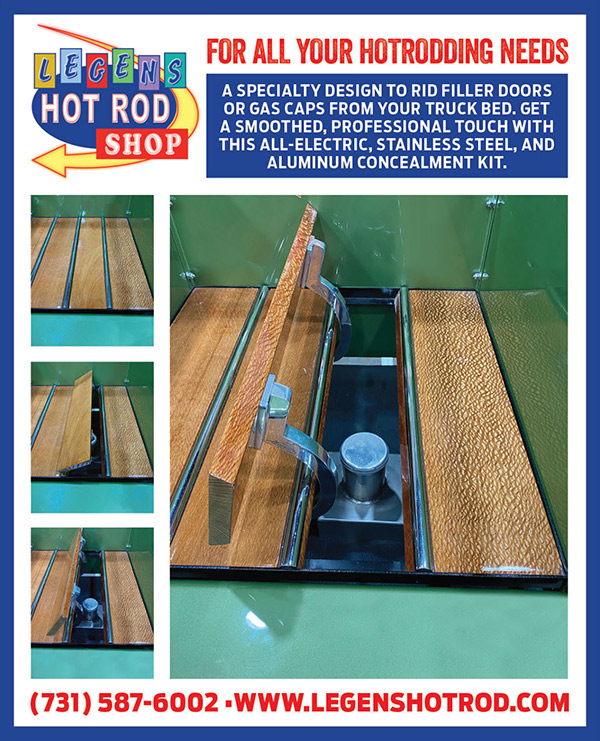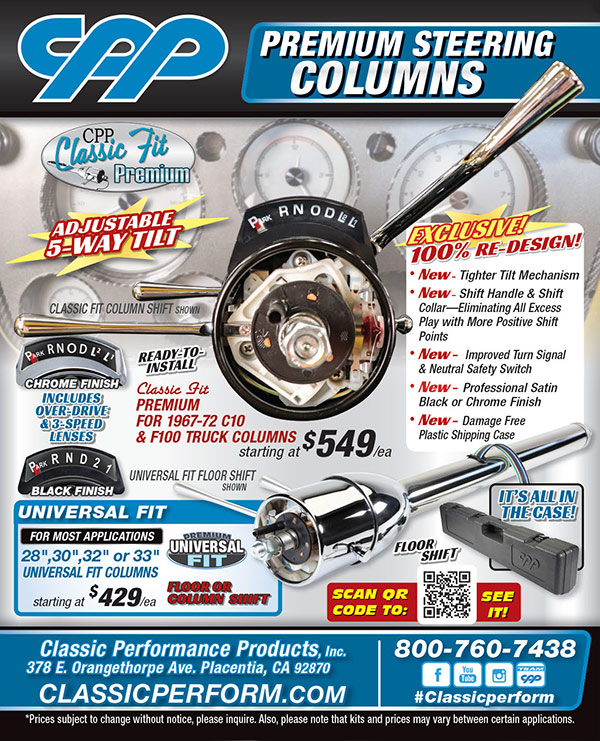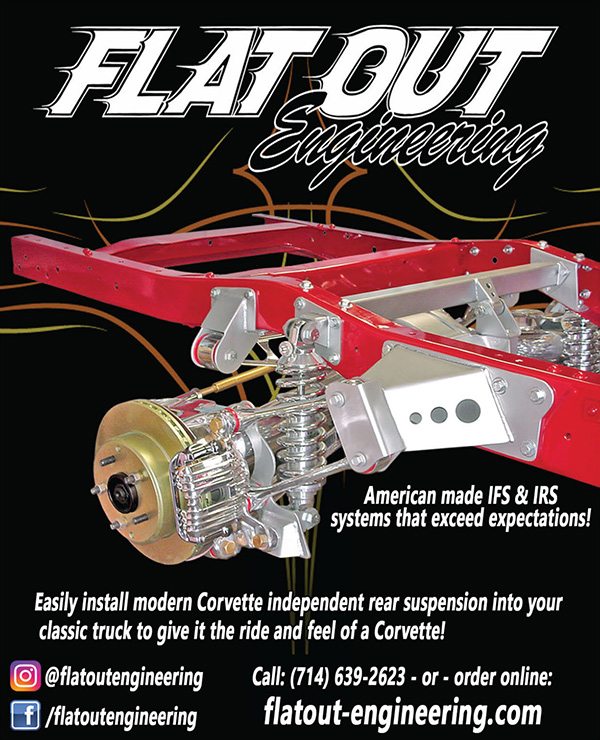
 TOC
TOC
378 E. Orangethorpe Ave. Placentia, California 92870
#ClassicPerform

Wes Allison, Rodney Bauman, Tommy Lee Byrd, Ron Ceridono, Michael Christensen, Ron Covell, Grant Cox, Dominic Damato, John Drummond, Fuelish Media, Eric Geisert, John Gilbert, Joe Greeves, Barry Kluczyk, Scotty Lachenauer, Don Lindfors, Ryan Manson, Josh Mishler, NotStock Photography, Todd Ryden, Jason Scudellari, Chris Shelton, Tim Sutton, Chuck Vranas, Michael Yamada – Writers and Photographers
ClassicTruckPerformance.com
AllChevyPerformance.com
ModernRodding.com
InTheGarageMedia.com
Travis Weeks Advertising Sales Manager
Mark Dewey National Sales Manager
Patrick Walsh Sales Representative
ads@inthegaragemedia.com
inthegaragemedia.com “Online Store”
For bulk back issues of 10 copies or more, contact store@inthegaragemedia.com
Editorial contributions are welcomed but editors recommend that contributors query first. Contribution inquiries should first be emailed to info@inthegaragemedia.com. Do not mail via USPS as we assume no responsibility for loss or damage thereto. IN THE GARAGE MEDIA, INC. reserves the right to use material at its discretion, and we reserve the right to edit material to meet our requirements. Upon publication, payment will be made at our current rate, and that said, payment will cover author’s and contributor’s rights of the contribution. Contributors’ act of emailing contribution shall constitute and express warranty that material is original and no infringement on the rights of others.

PRINTED IN THE USA.
CTP RESELLERS
Cleveland, OH
(216) 281-8777


 Still Hammerin’
Still Hammerin’InTheGarageMedia.com

hat saying “Built, Not Bought” has never sat well with me. Why? Simple: Who cares?!
Yeah, I get the whole pride in doing things yourself, but unless you keep everything you build, what ultimately happens to what you built? It gets bought. So, there goes that mantra right out the power windows you installed. You can—and should—take pride in your ride regardless of whether you built it, bought it, inherited it, whatever. And that’s purely what the common denominator should be, period.
I see flexing about this on the social medias all the time—often by individuals who, in fact, rely on “buyers” to support their “building” way of life. It’s quite the hypocritical situation, isn’t it?! I respect anyone who devotes any portion of their life to this great hobby of ours, whether it’s owning/driving/maintaining a classic vehicle, running a business that caters to, or, as some do, simply capturing this lifestyle on film/digital media for everyone else to enjoy. It really is a multi-faceted hobby, and without all the participants mentioned (and beyond), I don’t think it would be nearly as great as it is today.

 Parts Dept.
Parts Dept.

For more information, contact Schwartz Performance at (815) 770-0751 or visit schwartzperformance.com.
For more information, contact Lokar Performance Products at (877) 469-7440 or visit lokar.com.
For more information, please contact Summit Racing Equipment at (800) 230-3030 or visit summitracing.com.

 Feature
FeatureInTheGarageMedia.com


 Images BY NotStock Photography
Images BY NotStock Photographyvaguely remember the first time I saw that title used in a feature way back in the early ’90s: it was a Pro Street car in one of the meathead muscle cars mags of the time. I automatically thought it was one of the goofiest titles ever used, but looking back through mullet-tinged wayback spectacles, it kind of made sense.
When I first laid eyes on Paul Messman’s small-window C10 and subsequently heard a short video clip from the shoot that John Jackson had sent, that title immediately popped back in my head, but more as a play on Blue Bayou but also as an appropriate nod to its 598ci big-block power! Still kinda goofy, but even though I’ve never owned a mullet, I dig it!

 Tech
Tech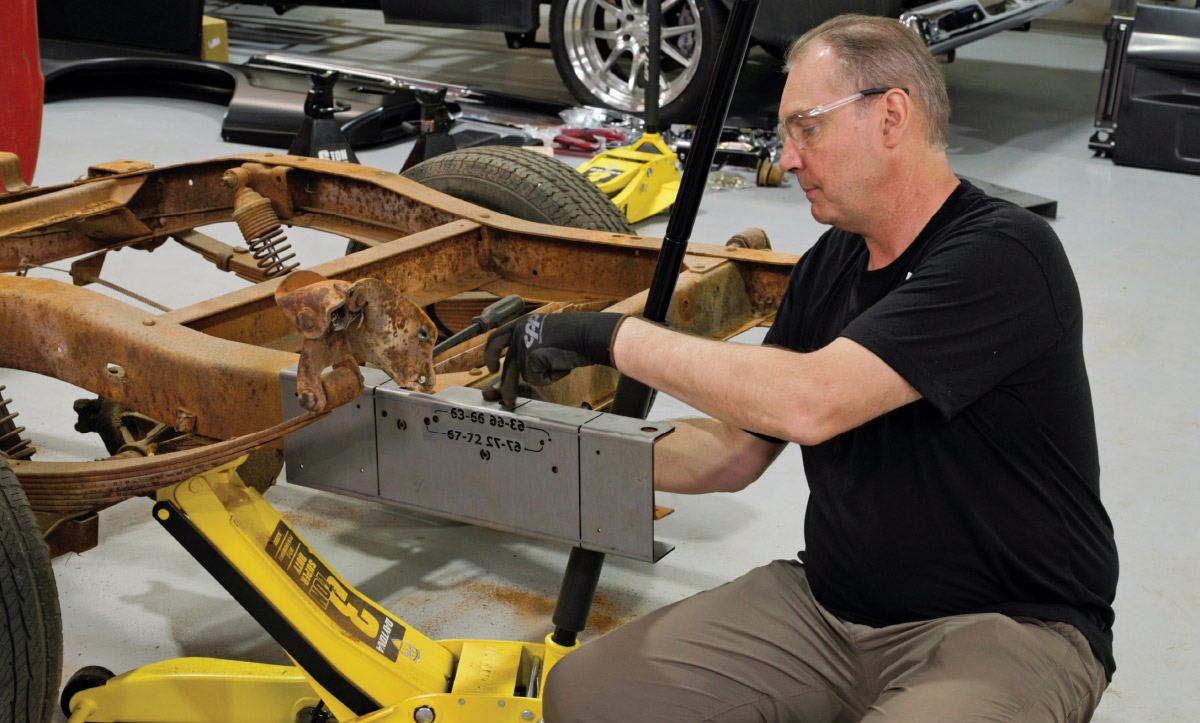

 Images BY CTP Staff
Images BY CTP Staffn the July ’24 editorial in Classic Truck Performance magazine, editor Rob Fortier covered the controversy concerning the conversion of a longbed C10 pickup into a shortbed. As always Rob looked at both sides of the issue while pointing out that General Motors sold far more longbed trucks than shortbeds, something like three times as many between 1967 and 1972. That fact is a good argument for cutting a longbed down to size.
Like many things, how pickup trucks are viewed today is far different from the ’60s and ’70s. Back then pickup trucks were simple, rugged utilitarian vehicles so it stands to reason that so many buyers opted for longbeds due to their increased carrying capacity. As a result, after years of service, many longbed trucks have the telltale signs of leading a rough life.

 Feature
FeatureInTheGarageMedia.com

 Images by THE AUTHOR
Images by THE AUTHORick Riesett, of Aberdeen, Maryland, wasn’t looking for a long-term project when he spied this 1965 C10 on an Internet “want ad” site back in 2014. What he wanted was a cool truck that he could turn a few wrenches on and quickly get out on the road. Unfortunately, it didn’t work out that way; but, in the end, he ultimately built the truck that he always dreamt he’d own.
It can be said that longbeds just don’t get the love and affection that their shorter counterparts do. Whether it’s a maneuverability issue, the ability to fit in smaller parking spots at your local speed shop, or just aesthetic preference, the longbeds usually get pushed aside by the builder crowd for the much more popular shortbed variety.

 Tech
Tech


 Images by THE AUTHOR
Images by THE AUTHORhen it comes time to tackle the exhaust system of your classic truck build, you’ll no doubt be presented a handful of options. In the past, most simply took their truck down to the local muffler shop for a traditional dual exhaust install. Today, a myriad of bolt-on exhaust kits can be ordered for some of the more popular models and engine configurations, making it possible for the DIYer to exhaust themselves in the comfort of their own home. For the ultimate custom applications, however, a fully fabricated stainless steel exhaust is the pinnacle of both performance and aesthetic.
After plumbing the chassis of our project 1964 Chevy C10, we turned our attention to the exhaust, or lack thereof. We thought briefly about purchasing an over-the-counter, bolt-on kit, but quickly realized that our chassis had a few too many modifications, namely in the rear, that would make a bolt-on effort more of a challenge than a convenience. We knew we wanted to use stainless steel as the material and we wanted a system that would allow the LS engine to breathe easily if we decided to go with a forced induction system in the future. A full 3-inch system would be great, but there were a few areas where routing that large tubing might prove problematic. That’s when a conversation with our buddy Joey Granatelli lit a spark. It just so happened that his company, Granatelli Motor Sports, offers a line of stainless steel exhaust components, not in round tubing but oval. This ticked both of our boxes on our list of “must-haves” as well as solving our fitment issue when it came to the larger, 3-inch-diameter tubing.



 Images by THE AUTHOR
Images by THE AUTHORuben Villamar, who lives in Irvine, California, answers the question: If you owned a construction company, what would you really like to drive to work? For Ruben, that’d be a ’68 Chevy Utility truck. The problem with finding most any truck to build is that it has probably been used as a truck! And finding a 50-year-old work truck means it has probably seen its share of abuse; but, as it turns out, not every old truck has been thrashed.
Described by Ruben as a “barn find,” this particular C10 started life as a factory stake bed, but a previous owner had swapped the bed out for a utility box, which is the way Ruben first spied it. With running his What U Need construction company, he naturally felt connected to the utilitarian ride and worked a deal to trade a 1968 Cadillac he had for it.

 Tech
Tech

 IMAGES BY Jessica Coleman & Andy Chaves
IMAGES BY Jessica Coleman & Andy Chavesf you’ve been following along with our 1968 C10 project, you’ve seen us checking all the fun stuff off our to-do list. Blast, paint, and reassemble a chassis with cool stuff to lower the truck? Check. Build up a junkyard 5.3 with a cam swap and valvetrain components to make 430 hp on the dyno? Check. Now for the part we’ve been putting off: that rotten, dented, yellow spray-bombed cab and sheetmetal. Fortunately, we found everything we needed on the shelf at Speedway Motors to replace the mangled original parts with fresh, new sheetmetal. Then, with all the cutting, welding, and grinding complete, we hit up our friends at No Coast Custom and Rod Shop to help us get things lined up, straightened out, and painted in time for the 2023 SEMA Show.
To get us started, Ben Vaneperen and the crew at No Coast helped us get the cab mounted on a rolling cart that would make it easy to move around the shop and allow us access to the floor, rockers, and cab corners. We elected to install a full floor that was complete from rocker to rocker, cab back to toeboard, and already had all the supports attached underneath. This may seem like a drastic move, but we can tell you that it made a huge difference in the quality of the finished product and the time it took to get there.

 Feature
Feature images by Josh Mishler
images by Josh Mishlerhe year 1954 was a big one—it saw the advent of poodle skirts, Wiffle balls, and most famous of all, the marshmallow Peep! But unless you’re a huge fan of ’50s kitsch, baseball, or nasty candy, those are of little to no relevance. In the automotive world, however, there was some rather exciting developments coming from the Chrysler camp.
While General Motors was about to transition from its Advance Design into the Task Force era, and Ford wrapping up its full-fendered F-100 run before entering the refrigerator market, Dodge did something that at the time was quite revolutionary: introduced the all-new C-Series (1954-60) pickup—a completely new design that offered more passenger car styling elements (especially with the debut of the Sweptline in 1957), available with everything from a 230ci flat inline-six to the Power Giant model 331 Hemi in 1957. Now that’s a hot rod truck from the factory, ain’t it?!


 Tech
TechInTheGarageMedia.com

 Images by THE AUTHOR
Images by THE AUTHORne of the most difficult things for someone to admit is that after investing time and money in a project that the completed project is no fun to drive. The fact is that even the coolest-looking trucks seldom see the road if the steering wheel placement isn’t comfortable.
When installing a steering column there are several considerations, certainly appearance is one of them. Many years ago steering columns were often sourced from wrecking yards. Those of us who have been around for a while can remember the GM car and truck tilt columns that were so ugly the bottom portion was hidden by carpet or upholstery material. Of course whenever steering components are involved, safety is a concern as well. Years ago, if U-joints were necessary to connect the steering column to the gear there wasn’t much to choose from. We’ve seen U-joints used that were designed for industrial applications, power takeoffs, import car applications, and even some from military surplus stores (most of which were for light helicopter tail rotor driveshafts). Many of these installations were sketchy at best and dangerous at worst.

 Feature
FeatureInTheGarageMedia.com

 Images BY Tim Sutton
Images BY Tim Suttonhen I began my magazine career back in the early ’90s, one of the first shops I was sent to was Fat Jack’s in Wildomar, California. Unbeknownst to me, its owner/namesake Fat Jack Robinson was a curmudgeon hot rod builder whom my boss at the time, Tom Vogele, had assumed would chew me up and spit me out due to his no-BS attitude. Well, unbeknownst to Vogele, we ended up hitting it off from the get-go due to my no-BS attitude—and the rest is history.
I followed quite a few of Jack’s builds over the years, including his personal 1951 Ford F-1, and in the process became good friends with several of his employees (Ryan Reed, Aaron Broughton, and more) as well as his protégé son, John “Johnny Rotten” Robinson, who’s carried on Pop’s posthumous Fat Jack style—low and mean with the utmost attention to every little detail. When the time came to get some shots of the current and final version of Jack’s big-block–powered Ford, I figured who better to tell the tale. Take it away, John! —Rob Fortier

 Event
Event


 IMAGES BY THE AUTHOR
IMAGES BY THE AUTHORruck shows have been around for decades, but there were many years when attendance seemed to plateau. It felt like the same trucks parked in the same spots each year. Even though each show was a reunion of sorts, the repetitive nature of many shows caused them to lose the “wow” factor that once made them so great. One of the events that broke the mold was the Grand National F-100 Show, held in the foothills of the Great Smoky Mountains. The tourist town of Pigeon Forge, Tennessee, is filled with Ford trucks of all generations, converging on the LeConte Center every May.
For 2024, Joe Carpenter and crew rearranged the parking layout to better suit the event. The new layout provided ample parking area in the outdoor show and shine area, as well as an expanded area for vendors and swap meet. The show continued its proven footprint inside the LeConte Center with an outstanding display of show trucks, vendors, and great food. The adjustment to the parking area was a welcomed change, as it allowed for more than 1,200 trucks to pour into the area and offers room to grow even more.
Dozens of awards in eight categories of judging covered all generations of classic Ford trucks, ranging from the ’30s through 1996. Specialty awards included Best Crew Cab, 4×4 Trucks, Panel Trucks, Best Patina Truck, and more. The Top 3 trucks included Holden Jung’s 7.3L Godzilla-powered 1956 F-100, Billy McSwain’s elegant and slick 1962 F-100 unibody, and Dennis and Saun Strobel’s ultra-clean 1950 F-1 pickup.
Ad Index
- AFFORDABLE STREET RODS67
- ALL AMERICAN BILLET19
- AMERICAN AUTOWIRE11
- ART MORRISON ENTERPRISES29
- AUTO METAL DIRECT35
- AUTOMETER PRODUCTS25
- AUTOMOTIVE RACING PRODUCTS49
- BEDWOOD AND PARTS73
- BOESE ENGINEERING97
- BOLING BROTHERS EARLY IRON73
- BORGESON UNIVERSAL CO.21
- CHEVS OF THE 40’S75
- CLASSIC INDUSTRIES57
- CLASSIC INSTRUMENTS67
- CLASSIC PERFORMANCE PRODUCTS4-5, 91
- DAKOTA DIGITAL99
- DINO’S GIT DOWN9
- EATON DETROIT SPRING, INC.95
- FITECH EFI79
- FLAT OUT ENGINEERING93
- FRONTIER SHOP SUPPLIES83
- GEARSTAR PERFORMANCE TRANSMISSIONS93
- GOLDEN STAR CLASSIC AUTO PARTS7
- GRANATELLI MOTOR SPORTS, INC.75
- HEIDTS SUSPENSION SYSTEMS81
- HEINZMAN STREET ROD SHOP97
- HEMMINGS65
- KUGEL KOMPONENTS97
- LEGENS HOT ROD91
- LMC TRUCK100
- LOKAR2, 43
- NATIONAL STREET ROD ASSOCIATION63
- OLD AIR PRODUCTS79
- PAINT OVER RUST PRODUCTS81
- PHOENIX MACHINE PRODUCTS93
- POWERMASTER PERFORMANCE83
- PPG INDUSTRIES27
- PREMIER STREET ROD41
- PRO’S PICK95
- ROADSTER SHOP55
- ROD SHOWS61
- SCOTT’S HOTRODS91
- SPARETIME BILLET95
- SPEEDWAY MOTORS37
- THAT’S GREAT NEWS97
- THERMO-TEC AUTOMOTIVE95
- TMI PRODUCTS93
- TRIPLE CROWN OF RODDING, LLC45
- VINTAGE AIR6
- WILWOOD ENGINEERING47





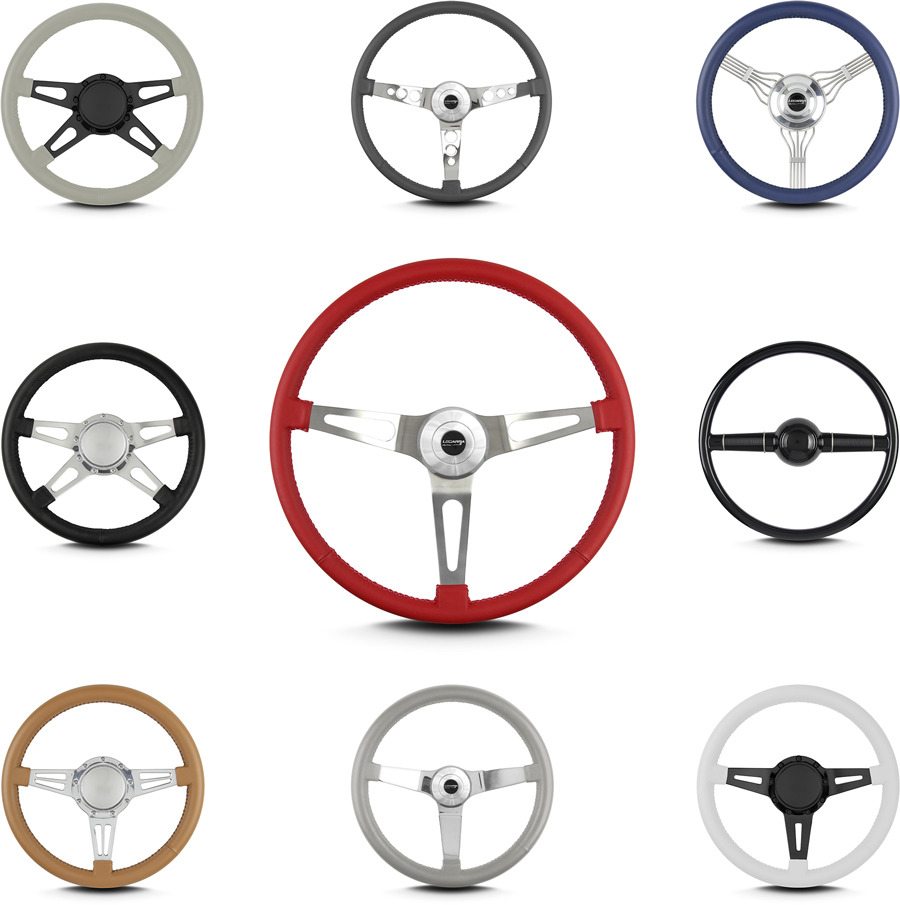














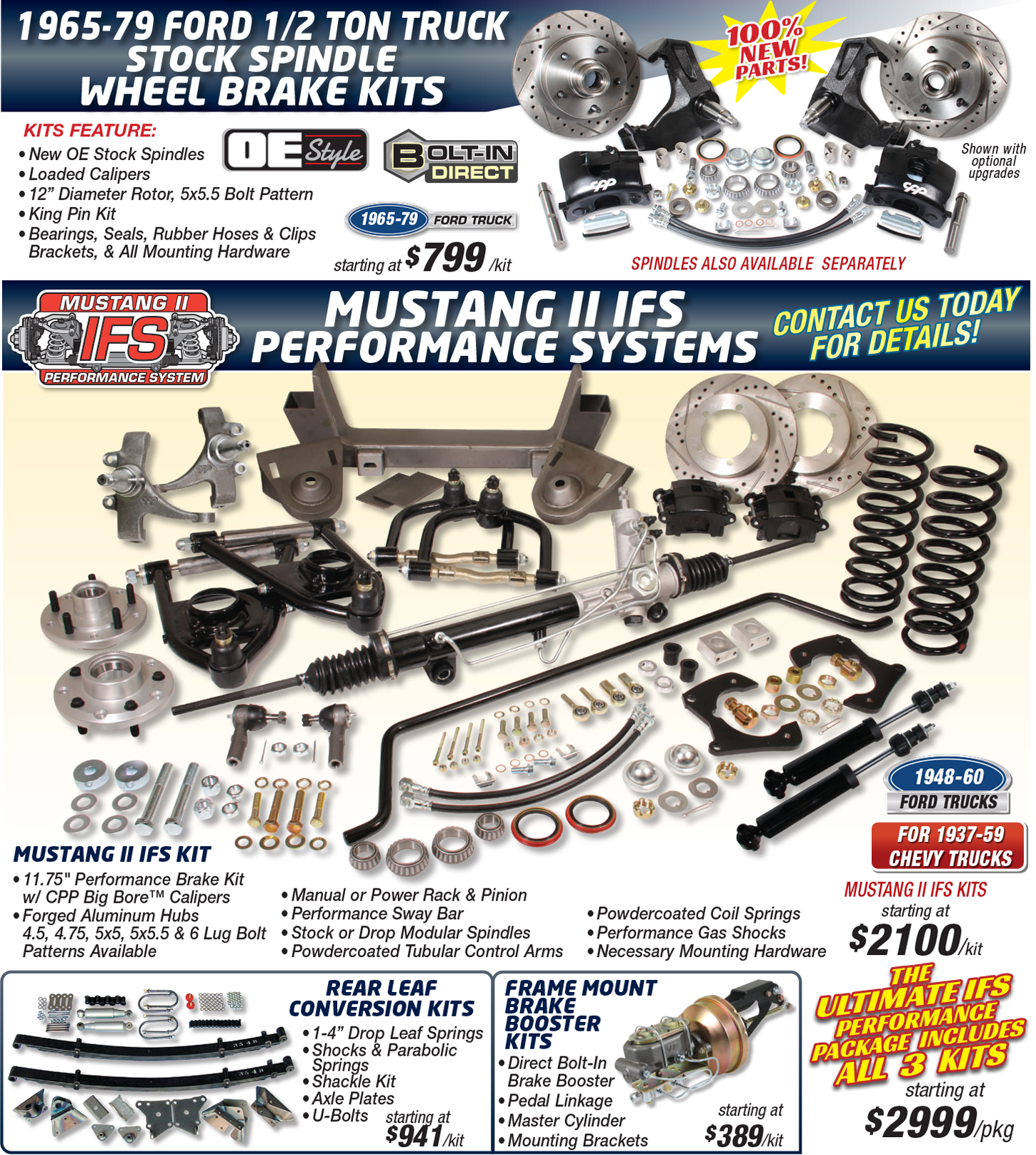





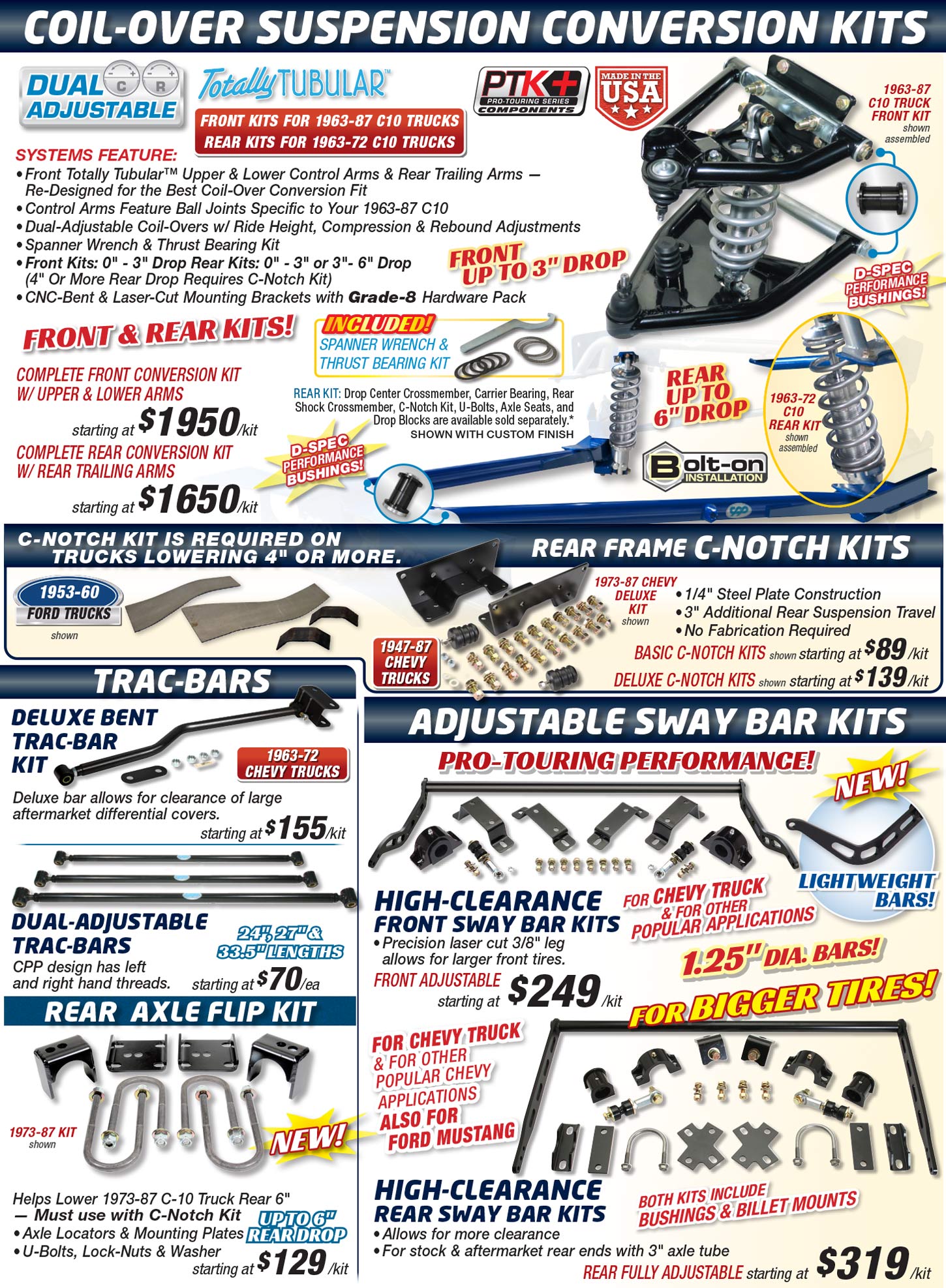










 BY
BY 































